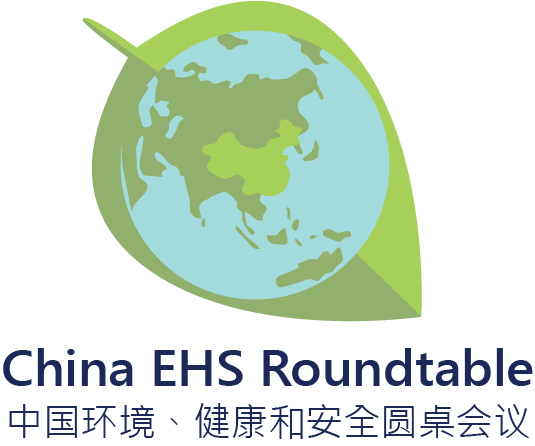China Enacts Landmark Legislation Addressing Soil Contamination
China enacted its Soil Pollution Prevention and Control Law on August 31, 2018. The law is the first national statute in China specifically addressing soil contamination. It will take effect on January 1, 2019, and is expected to fill the statutory gap for China’s efforts to prevent and control soil contamination.
Background
Strong political momentum has driven China to address soil contamination within the country in recent years. From 2005 to 2013, the Ministry of Ecology and Environment (MEE, formerly the Ministry of Environmental Protection) and the Ministry of Natural Resources (formerly the Ministry of Land Resources) performed a nationwide soil quality survey, and they published a report in 2014. The Report states:
The country’s overall status of the soil environment is not optimal. Some regions have considerably serious soil contamination; the environmental quality of soil for farming uses is concerning; [and] abandoned sites from industrial and mining operations present severe soil environmental problems. . . .
Under the Environmental Protection Law, China has promulgated several regulations and technical standards on soil environmental management in recent years (e.g., “soil environmental management” regulations for agricultural land, industrial and mining land, and contaminated sites, respectively). However, the lack of a soil statute, to a certain extent, delayed soil-related regulatory developments, as a legislative report pointed out:
Our country currently lacks a special law on soil contamination prevention and control. Some measures are scattered in the laws on environmental protection, solid waste, land administration, and quality and safety of agricultural products. . . . The framework is not comprehensive, the requirements are not clear, and the obligations are not clarified; the regulatory authorities have inadequate legal basis to rely upon. . . .
In 2016, China’s State Council, the country’s cabinet authority, issued an Action Plan on Soil Pollution Prevention and Control. The Soil Action Plan sets out a policy framework to highlight ongoing work efforts and assigned new tasks to various governmental authorities to tackle soil contamination. Completion of the drafting of the Soil Pollution Prevention and Control Law was put onto the agenda. In June 2017, the Standing Committee of the National People’s Congress started its legislative process on the soil contamination bill which was finally enacted in August 2018 after three phases of deliberation in the legislature.
What is in the Law?
The Law sets out general principles for soil pollution prevention and control (i.e., “a focus on prevention, [with] priority given to protection, classified management, risk management and control, pollution liability, and public participation”) and introduces a series of soil pollution prevention and control management systems (e.g., planning and information sharing, risk management and control, monitoring and supervision, etc.). Below are some aspects of the Law that are likely to be of primary interest to companies doing business in China:
Risk Management and Control System
National and local governmental authorities are empowered under the Law to develop national/local standards for management and control of soil pollution risk (Article 12). The standards will be mandatory and must be disclosed to the public (Article 13).
At the national level, two standards (i.e., Soil Environmental Quality – Risk Control Standard for Soil Contamination of Agricultural Land (GB 15618 -2018) and Soil Environmental Quality – Risk Control Standard for Soil Contamination of Development Land (GB 36600- 2018)) were issued by MEE earlier this year with an effective date of August 1, 2018. According to the standards, if the concentration of soil pollutants exceed certain risk screening values for soil contamination, a detailed investigation and risk evaluation must be followed up to identify the scope of the contamination and associated risk level. If the concentration of soil pollutants exceed certain risk intervention values, treatment/remediation measures must be taken.
Soil Information Sharing Mechanism
The Law requires that MEE, in conjunction with other agencies, establish a basic soil environment database and build a national soil environment information platform to enable dynamic data updating and sharing (Article 8). Further, several provisions of the Law specify the information which is required to be shared on the platform, including:
- An inventory of hazardous substances in soil subject to key controls (Article 20);
- A directory of entities subject to key supervision for soil contamination (Article 21);
- An inventory of construction land subject to risk control and remediation (Article 59);
- A soil contamination survey including monitoring results and soil pollution prevention and control plans (Article 11); and
- Official interview updates (i.e., summaries of provincial environmental protection department interviews with officials of the cities where there are prominent soil pollution problems with ineffective prevention and control plans, which interviews must address required corrective measures and rectification processes) (Article 76).
The information sharing mechanism is intended to provide an efficient tool for the public to access soil information and monitor any soil-related issues in China.
Classified Management System for Agricultural Land, and Controls for Pesticides, Fertilizers, and Films/Membranes
The Law envisions a three-tier “administration by category” system for agricultural land, covering land for “priority protection,” for “safe use,” and for “strict control.” Land for priority protection will be reserved as “permanent farmland” with a strict prohibition of any soil-polluting development project. Land for “safe use” will be subject to regulatory “safe-use” plans. Land for “strict control” will be subject to certain risk control measures (Articles 50, 53, 54). Further, the Law requires control of the usage of pesticides and fertilizers on agricultural land, as well as the usage of agricultural films/membranes (Article 16). In addition, producers, sellers, and users of agricultural inputs are required to recycle the waste packaging of pesticides, fertilizers, and other agricultural inputs, and waste agricultural films/membranes, and hand such materials to special entities for harmless treatment (Article 30). These new provisions will apply in addition to the requirements for approval of pesticides/fertilizers under current effective pesticides/fertilizer administrative laws.
Inventory of Construction Land Subject to Risk Control and Remediation
The Law requires the provincial ecological and environmental departments, along with the provincial natural resource departments, to develop an Inventory of Construction Land Subject to Risk Control and Remediation (Article 58). For any identified construction land (i.e., non-agricultural land used for residential, industrial, mining, or other purposes) with possible contamination risk, the Responsible Person (i.e., person responsible for soil contamination under the Law) or the person with the right to use the land is required to conduct a soil contamination investigation and file a soil contamination assessment report to the relevant ecological and environmental department (Article 59). The provincial ecological and environmental departments will include the lands requiring risk control and restoration into the Inventory based on the review of the assessment reports in a timely manner (Article 61). For any construction land listed in the Inventory, the Responsible Person is required to implement control measures according to the soil contamination assessment report and periodically report the progress to the relevant ecological and environmental department (Article 62). This Inventory management system would provide guidance for future investment, inasmuch as the construction land listed in the Inventory will not be allowed to be used for residential, public management or public services until such land is removed from the Inventory (Article 61 and Article 66).
Directory of Entities Subject to Key Supervision for Soil Contamination
The Law requires the ecological and environmental department at or above the city level to develop directories of entities subject to key supervision for soil contamination (Article 21). The entities included in the directories are required to do the following (Article 21):
- Strictly control the discharge of toxic and hazardous substances, and report discharge information to the ecological and environmental authority on an annual basis;
- Establish a screening system for hidden soil pollution risk and ensure the continuous and effective prevention of leakage, loss, and spills of toxic and hazardous substances; and
- Develop and implement self-monitoring plans, and submit monitoring data to the ecological and environmental authority.
Responsibility for Soil Contamination
The Law specifies the allocation of responsibilities for soil contamination. In short, the Responsible Person is obliged to implement the risk control and remediation measures and is responsible for all the expenses associated with soil contamination investigation, risk evaluation, risk management and control, remediation effect assessment, and long-term management (Article 45). Please note that the Law does not further elaborate the concept of Responsible Person; however, according to the principle “whoever pollutes shall treat and restore [contaminated land]” set out the Soil Action Plan, the Responsible Person appears to be the person who causes soil contamination. MEE is working on rules for identifying Responsible Persons, which are likely to be promulgated next year. Further, according to the Law, the person with the right to use the land or the successor of the Responsible Person may be held liable for soil contamination under certain circumstances (Article 45 and Article 47).
Supervision and Enforcement
The Law empowers the ecological and environmental authorities and enforcement bodies to conduct on-site inspections of entities which may cause soil contamination (Article 77). The inspector/enforcement officers are allowed to take samples and request all relevant documents and information from the entities during the inspection. The inspector/enforcement officers are empowered to take administrative measures, such as seizure or freezing of the relevant facilities, equipment or articles involved in discharging toxic and hazardous substances in violation of any law or regulation, causing soil contamination, or destroying or concealing relevant evidence (Article 78). In addition, the soil-related activities may affect the credit score of the entities or individuals involved, and all violations will be recorded in the social honesty archives and included in the National Credit Information Sharing Platform and the National Enterprise Credit Information Publication System (Article 80).
Liability
The Law imposes civil, administrative and even criminal liabilities for various violations of the Law (e.g., when entities subject to key supervision for soil contamination do not have the required screening and self-monitoring plan; when the Responsible Person fails to take risk management, control, or remediation measures; etc.) (Chapter 6). Moreover, the Law authorizes (without elaboration) relevant agencies or organizations to bring public interest suits (Article 97) for soil contamination.
What is Next?
Companies with operations in China or with plans to open new operations in China should carefully review the Law and may need to initiate soil investigations or take immediate risk control and remediation measures if soil contamination has been identified. They should also take into consideration soil issues in any new business transactions.
As the umbrella legislation in the field, the Soil Pollution Prevention and Control Law sets out the framework for soil environmental management and empowers environmental and other relevant authorities to issue administrative regulations to implement the Law. In this regard, we should expect the rapid evolution of soil regulations in the next few years in the following main respects:
- Stringent local standards for soil contamination risk control (Article 12);
- Rules on soil environmental monitoring (Article 15);
- Inventory of toxic and hazardous substances subject to targeted control (Article 20);
- Directory of entities subject to key supervision for soil contamination (Article 21);
- Standards or rules on total load control of pesticide or fertilizer uses (Article 26);
- Rules on recycling and hazard-free handling of waste packaging for pesticides and fertilizers and waste agricultural films/membranes (Article 30);
- Rules on determining the Responsible Persons for soil contamination (Article 48);
- Rules on classifying agricultural land for soil contamination control (Article 49);
- Inventory of Construction Land Subject to Soil Contamination Risk Control and Remediation (Article 58); and
- Rules on the use of central and provincial government funds for soil pollution prevention and control (Article 71).
As the Soil Action Plan in 2016 suggested, a comprehensive soil contamination prevention and control legal system should be “fundamentally established” by 2020.











